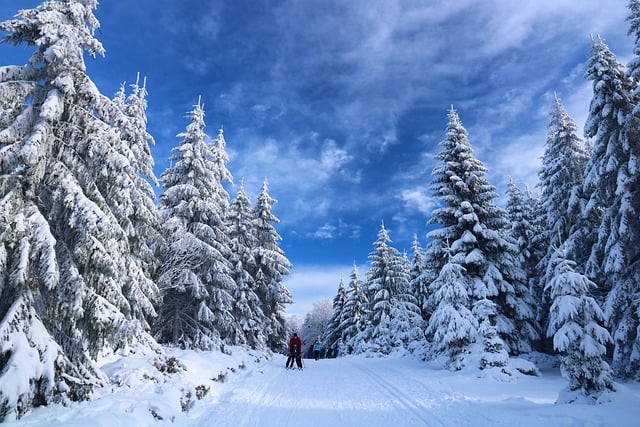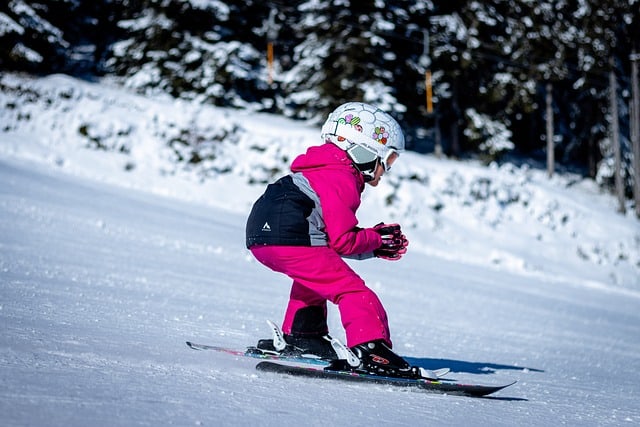Winter sports, an exhilarating experience full of adrenaline and speed, are gaining a new edge – environmental consciousness. More specifically, we’re talking about eco-skiing. But what is eco-skiing?
Eco-skiing is a sustainable approach to winter sports, focusing on reducing environmental impact through responsible practices at ski resorts and among skiers themselves.
It’s time to delve deep into the world of eco-skiing, understanding its meaning, impact, benefits, and ways to be an eco-skier. So grab your gear, tighten your bindings, and let’s hit the eco-skiing slopes!
What is Eco Skiing – The Ultimate Guide

Eco skiing, also known as green skiing, is an approach to skiing that is mindful of its impact on the environment.
It considers factors such as minimizing carbon emissions, reducing waste, conserving water, and promoting renewable energy use in skiing resorts.
It also encourages skiers to practice responsible tourism. Now, let’s unpack this innovative concept further.
The Birth of Eco Skiing
Eco skiing is a direct response to the growing concerns about the impact of winter sports on the environment.
Ski resorts traditionally consume vast amounts of energy for activities like snowmaking, running ski lifts, and maintaining facilities. They also contribute to habitat disruption and other ecological issues.
Eco skiing arose as an answer to these environmental challenges, championing practices that reduce the ecological footprint of skiing.
The Impact of Skiing on the Environment
Traditional skiing practices have several impacts on the environment.
These include deforestation for ski resort construction, water consumption for artificial snow, energy use for ski lifts and facilities, waste generation, and increased carbon emissions from travel.
The Principles of Eco Skiing
The principles of eco skiing encompass a broad range of practices.
These include using renewable energy sources at ski resorts, conserving water by limiting artificial snow production, reducing waste, promoting carpooling or public transportation, and supporting resorts that demonstrate a commitment to these principles.
Benefits of Eco Skiing
So, why should you consider eco skiing? The benefits are twofold: it’s good for you, and it’s good for the planet.
Eco Skiing and Personal Fulfillment
Eco skiing is not just a fun sport, but also a lifestyle that aligns with your values of environmental sustainability.
This convergence of passion and principle brings about a unique sense of fulfillment.
As an eco-skier, every swoosh down the slopes is a testament to your commitment to living harmoniously with nature.
The fresh air filling your lungs, the untouched snow beneath your skis, the serene beauty surrounding you – it all becomes more meaningful when you’re skiing with the knowledge that you’re minimizing your impact on these precious landscapes.
Eco Skiing and Environmental Preservation
Every choice we make, no matter how seemingly insignificant, has ripple effects on the world around us.
By choosing to be an eco-skier, you’re contributing to the preservation of the environment.
Reducing carbon emissions, saving water, and decreasing waste may seem like drops in the bucket, but collectively, these efforts add up and make a significant difference.
You’re not just preserving the beauty and integrity of the skiing landscapes for future generations but also actively fighting against broader environmental threats like climate change.
Eco Skiing and Social Responsibility
Beyond personal satisfaction and environmental preservation, eco skiing also underlines the critical aspect of social responsibility.
Ski resorts that adopt sustainable practices often go hand in hand with fair trade, local sourcing, and respectful interaction with local communities.
By supporting these resorts, you’re helping to stimulate local economies, preserve cultural heritage, and promote ethical business practices in the tourism industry.
Therefore, eco skiing extends beyond environmental consciousness, reaching into the realm of social equity and community support.
How to Be an Eco Skier

Becoming an eco skier is not merely a switch you flip, but rather a journey of mindful choices and practices.
This journey begins with the recognition of your impact as a skier and extends to your daily actions, from choosing your ski resort and gear to how you conduct yourself on the slopes and beyond.
Choosing the Right Ski Resort
The first step in becoming an eco skier is selecting the right ski resort.
Look for resorts that champion sustainability, adopting energy-efficient infrastructure, water conservation practices, waste management, and habitat protection.
They may use renewable energy sources, limit artificial snow production, and maintain eco-friendly waste systems.
Supporting such resorts means voting with your dollars for environmental conservation.
Practicing Responsible Tourism
As an eco skier, it’s crucial to respect the natural environment and local communities at your chosen ski destination.
This means sticking to marked trails to avoid disrupting wildlife habitats, minimizing waste, and respecting local cultures.
When possible, carpool, use public transportation, or choose accommodation close to the resort to reduce your carbon emissions.
Choosing and Maintaining Eco-Friendly Ski Equipment
Your ski equipment can also significantly impact your eco skiing journey.
Some brands now offer ski gear made from recycled materials or manufactured through sustainable processes.
Choosing these brands helps reduce the demand for virgin materials and supports companies that prioritize the environment.
Moreover, properly maintaining your ski gear to extend its lifespan can prevent unnecessary waste.
When it’s finally time to retire your equipment, seek out recycling programs or donation options rather than sending it to the landfill.
Being an Advocate for Eco Skiing
Lastly, being an eco skier also means being an advocate for sustainable skiing practices.
Share your knowledge and experiences with your fellow skiers, encourage your favorite resorts to adopt more eco-friendly practices, and use your influence to promote a culture of respect and love for our environment.
The journey towards sustainability is a collective one, and every voice counts.
Eco Skiing Equipment
Choosing the right equipment is an essential part of the eco skiing journey.
From the gear you use on the slopes to how you care for and dispose of it, each decision contributes to your eco skiing efforts.
Below, let’s break down the different aspects of eco-friendly ski equipment.
Choosing Eco-Friendly Ski Gear
Selecting eco-friendly ski gear is a great start to your eco skiing adventure.
Here are some factors to consider:
- Materials: Some ski equipment manufacturers are turning to sustainable and recycled materials in their products. Look for gear made from recycled plastics, metals, or sustainably harvested wood.
- Production Process: Besides the materials used, consider the manufacturing process of the gear. Companies that prioritize energy efficiency, limit harmful chemicals in their production, and actively manage waste contribute to more sustainable skiing.
- Brands That Care: Support brands that demonstrate a commitment to the environment. These companies invest in renewable energy, strive for carbon neutrality, and take steps to offset their environmental impact.
Maintenance of Ski Equipment
Proper maintenance can significantly extend the life of your ski gear, reducing the need for replacements and thereby minimizing waste. Here are a few maintenance tips:
- Regular Checks: Regularly inspect your ski gear for any wear and tear. This helps catch minor issues before they turn into major problems.
- Proper Cleaning: Clean your gear after each ski trip. Dirt and moisture can damage your equipment over time, so it’s important to keep it clean.
- Professional Servicing: Regular professional servicing can keep your gear in top condition. Professionals can fine-tune your gear and address any issues that may not be apparent to the untrained eye.
Disposal of Ski Equipment
When it’s time to retire your ski equipment, disposing of it responsibly is crucial. Here’s what you can do:
- Recycling: Look for local recycling programs that accept ski equipment. Some components of your gear, like metals and plastics, may be recyclable.
- Donation: Consider donating your old gear to organizations that refurbish and redistribute it to those in need.
- Upcycling: Get creative and upcycle your old equipment. Old skis and snowboards can be transformed into furniture, decorations, or even art.
Each of these steps helps to reduce the environmental impact of your ski gear, taking you one step closer to being an eco skier.
FAQs About Eco Skiing
Q: How does eco-skiing benefit the environment?
A: Eco-skiing helps conserve natural resources, reduces waste, minimizes carbon emissions, and protects wildlife habitats.
Q: How can I be an eco skier?
A: You can be an eco skier by choosing to patronize eco-friendly ski resorts, using sustainable ski equipment, practicing responsible tourism, and advocating for environmental consciousness in winter sports.
Q: Are there eco-friendly ski gear brands?
A: Yes, several brands offer eco-friendly ski gear made from recycled materials or sustainable production processes.
Q: What should I do with my old ski equipment?
A: Old ski equipment should be maintained well to extend its life. When it’s time to dispose of it, look for recycling programs rather than sending it to the landfill.
Conclusion

So, there you have it – your ultimate guide to eco skiing.
Now that you’re equipped with knowledge about what is eco skiing and how to be an eco-skier, it’s time to embrace winter sports with a new perspective – one that harmonizes the thrill of the slopes with respect for Mother Nature.
Happy eco skiing!
Sources
- “How to be a Sustainable Skier” – Protect Our Winters
- “10 Ways to be a More Sustainable Skier” – REI Co-op Journal
- “Eco-friendly Ski Gear: How to Make More Sustainable Choices” – SnowPak
- “Ski Green: What Makes a Ski Resort Sustainable?” – The Guardian
I’m Thomas, the owner of SustainableWave. Passionately promoting a sustainable planet. With experience in various eco-roles, I’ll share green tips, sustainability hacks, and personal eco-journeys on my blog.






